Bhutan is one of those magnetic travel destinations, frequently put on one's 'bucket list', unspoilt by mass travel and away from backpackers' trails, due to somewhat prohibitive costs of getting there. Indeed, many travellers I have come across in Bhutan were affluent and retired, keen to tick the 'hidden gem' boxes they have always dreamt of visiting. At $250 a day plus $30-40 daily supplement for couples and singles, the question is: "Is it worth a trip?"
Bhutan is a Himalayan kingdom with deeply rooted Bhuddist culture, ubiquitous monasteries and majestic dzongs, snow-peaked mountains and rich forests, nesting between India and Tibet (China). Bhutan, one of the youngest monarchies in the world, dates back to 1907 when Ugyen Wangchuck was elected as hereditary ruler by the country's chiefs and lamas. Of course, Bhutan's history dates back further to the VII century, when first Buddhist temples were built there by Tibetans and further still to nomadic herders, who inhabited the area in 1500-2000 BC. But it was not until 1950s that the country cautiously opened its borders to foreign visitors and allowed modernisation replace seclusion and isolation.
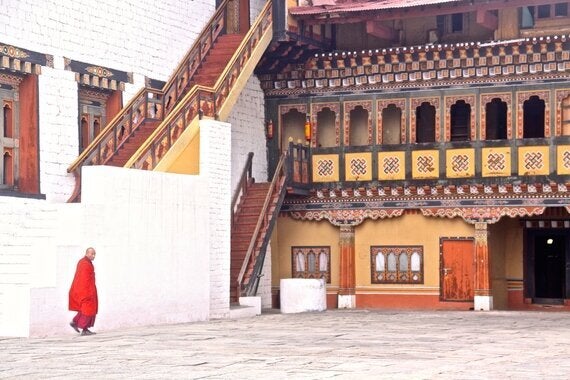
Many come to Bhutan chasing a dream of Seven Years in Tibet featuring butter lamps, prayer wheels, Buddhist chants, monks clad in red ropes and even Brad Pitt. Some are on a quest for mountain trails unspoilt by the tourist infrastructure, nowadays prevalent in India, China and Nepal. Bhutan appeals to most because of its preserved identity, religious rituals and traditions, unchanged since ancient times.
But Bhutan is not Shangri La, and if you are coming here to see it, you will be disappointed. On the contrary, if you are eager to see a country with a unique blend of traditional culture and modern aspirations, then you will come to the right place. Bhutan has been determined to find a path of sustainable development, protecting its heritage yet looking after the well-being of its citizens.
In the words of Dasho Kinley Dorji, Secretary, Ministry of Information and Communication:
"Bhutan decided long ago that we will never be a military power, we will never be an economic force, so to survive we must have a distinct identity. This is the identity you see; our clothes, language, the architecture. You look around and you feel that you are in a different world. This is not an accident."
Where else would you find a nation where most people wear traditional uniform to work, where chillies are the main ingredient of the staple national dish, where giant phalluses are painted on houses as a symbol of protection, where rice is pink and '80' is an inauspicious year to die (your body would be preserved for a year before it could be cremated)?
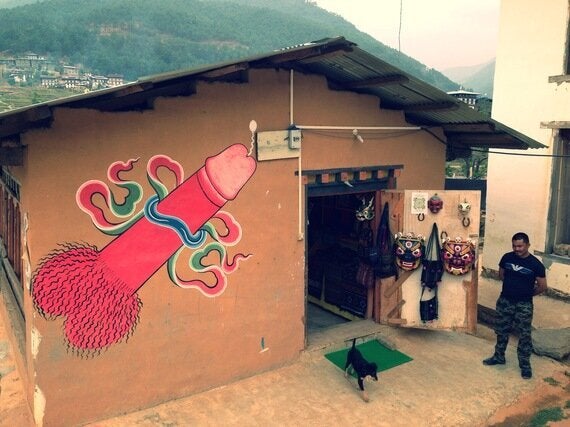
And yet globalisation and economic necessities led Bhutan to let the wider world in, choosing a path, which would play to the country's comparative advantage and allow it to modernise, build infrastructure, establish industries. As a result, a country with virtually no urban settlements, no currency, postal service, or schools before 1960s now has a third of its population living in cities with agriculture accounting for just 10% of its income, according to the Living Standard Survey 2012. Previously self-sufficient, today Bhutan is heavily dependent on imports, reportedly 90% of which are coming from India. The locals say: "We grow potatoes, sell them to India, and they sell them back to us as potato chips."
Bhutan is famous for measuring its growth and development using a concept of Gross National Happiness. The term was coined by the Fourth King of Bhutan in the 1970s in order to emphasise the importance of non-economic factors of development. The nine components of the index are: psychological wellbeing, health, education, time use, cultural diversity, good governance, community vitality, ecological diversity and resilience and living standards. For example, to address ecological diversity and resilience, at least 60% of Bhutan must remain forested by law. In 2010, Bhutan's Gross National Happiness was measured at 0.743 (on a scale of 0 to 1), but one has to wonder whether it went up since. Whilst in terms of economic development, Bhutanese citizens, especially urban dwellers, appear to be better off than their counterparts in India or Nepal, it was hard not to notice scattered plastic bottles in the forest, aspirations of the young to immigrate from Bhutan and the pervasive Western influence, with young monks flicking through photos of Shakira on their mobile phones and youngsters munching on crisps.
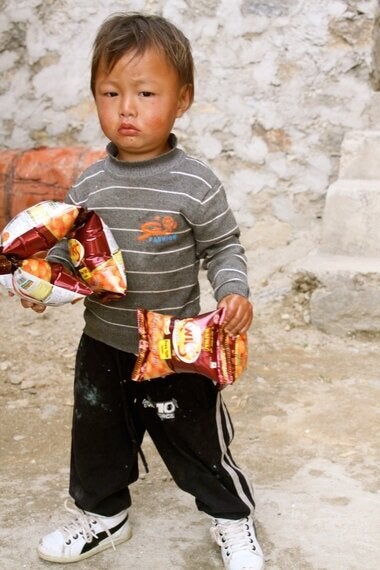
Traditionally, families with several children would send one of them to the monastery. Children would leave home at about ten years of age. In Bumthang my guide helped me to interview a 10-year-old monk who has only just joined a monastery. "I am not allowed to visit home for a year. It is hard but my brother is also here, so it is better. I like school but I miss my home." If a child were to leave a monastery to go back home, his family would have to pay a fine.
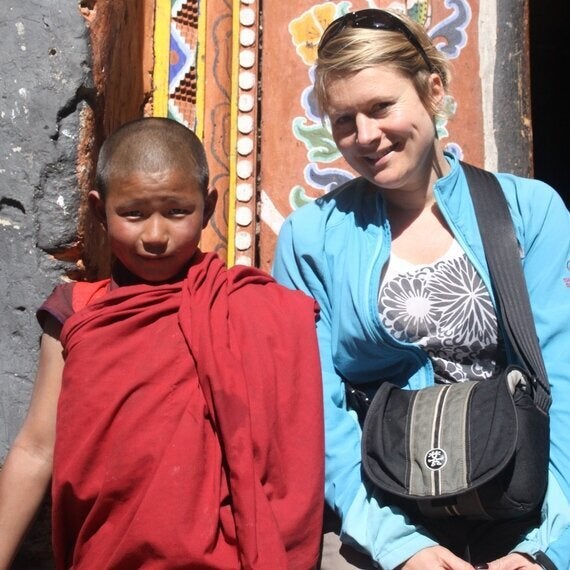
And yet it is impossible not to bring back the colourful, happy, lively memories of Bhutan. The highlights of my ten day stay were visiting Bumthang, climbing up to Taktshang Goemba (Tiger's Nest Monastery) and taking part in Paro tsechu, the largest annual dance festival with thousands of locals coming from all over Bhutan to witness it.
Central Bhutan and Bumthang valley in particular is well worth the trip with its lush valleys and forested mountains so beautiful in spring when white and crimson rhododendrons are in blossom. It is here that you will find some of the most ancient monasteries and temples, which appeared to be less crowded than those in Western Bhutan. Jambey Lhakhang, a VII century monastery and a temple complex Kurjey Lhakhang near the sacred Kurjey Drupchhu spring (where local monks wash their socks!) were my favourite places of interest.
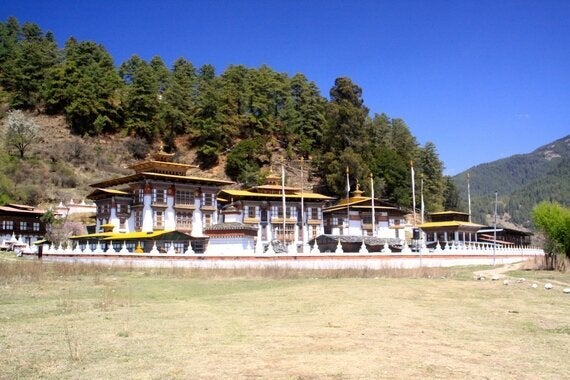
Taktshang Goemba is not just the most famous postcard image of Bhutan with a monastery perched on an almost vertical cliff, but it is also a genuinely revered religious site, because of its association with Guru Rimpoche. Guru Rimpoche is believed to have brought Buddhism to Bhutan, and, according to the legend, he flew to this very rock in the Paro valley on the back of a tigress (his Tibetan consort) to defeat a local demon. He then mediated in a cave here for three months. Taktshang Goemba or Tiger's Nest Monastery was built here in the XVII century. They say female celestial beings helped to bring the building materials up the 900m rock, a story most tourists believe readily, as they make their way up, which takes over an hour.
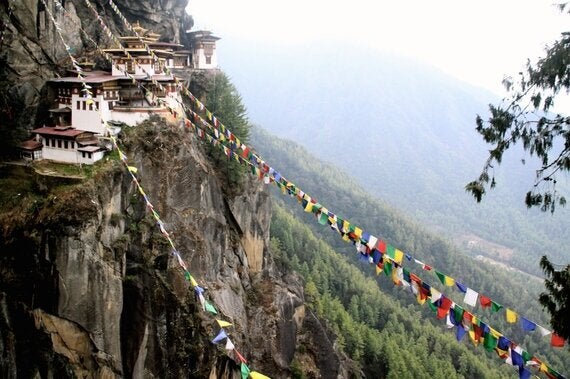
Tsechus, colourful and mesmerising dance festivals, are popular with visitors and locals alike because they are believed to have purifying effect on the soul. Dances are performed by monks and hired civilians, taking on roles of demons and deities, animals and mythical creatures. Atsaras are masked clowns, who mimic the main dancers and entertain the audience. In my presence, they were trying to match a giant wooden phallus to a group of embarrassed government officials to delightful cheering from the crowd.
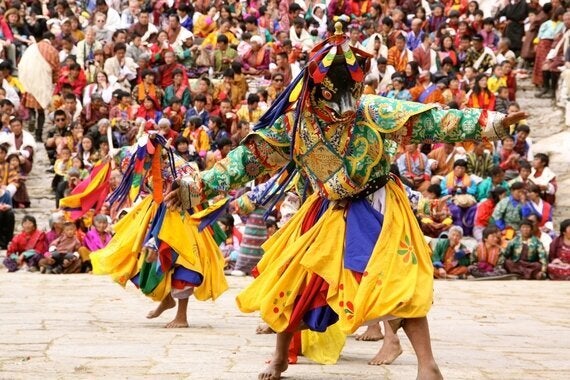
The open air seats around the performing area were packed from dusk till dawn with foreigners and their expensive SLR cameras intermingling with the local crowd chewing betel nuts and enjoying the show.
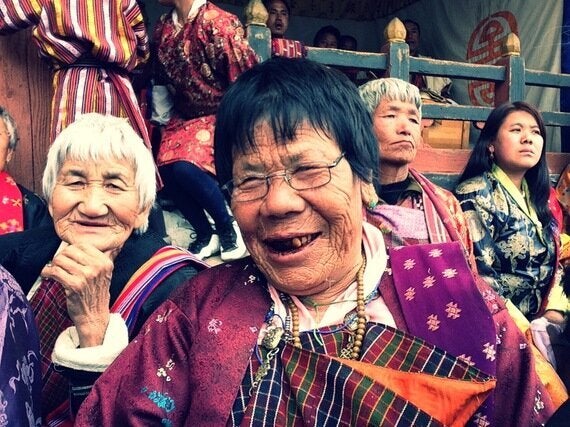
$250 a day plus single supplement covered virtually everything: my accommodation, transport, food, water, visa, historic site fees. I had my own personal guide and a personal driver and stayed at three star hotels (more luxurious accommodation is charged extra). An average tourist must be spending more than that visiting London, albeit without personal touch.
Is it worth it? It most certainly is, but don't leave it until you are nearly kicking the bucket, as a strenuous climb to Tiger's Nest calls for youthful vigour and spirit..!